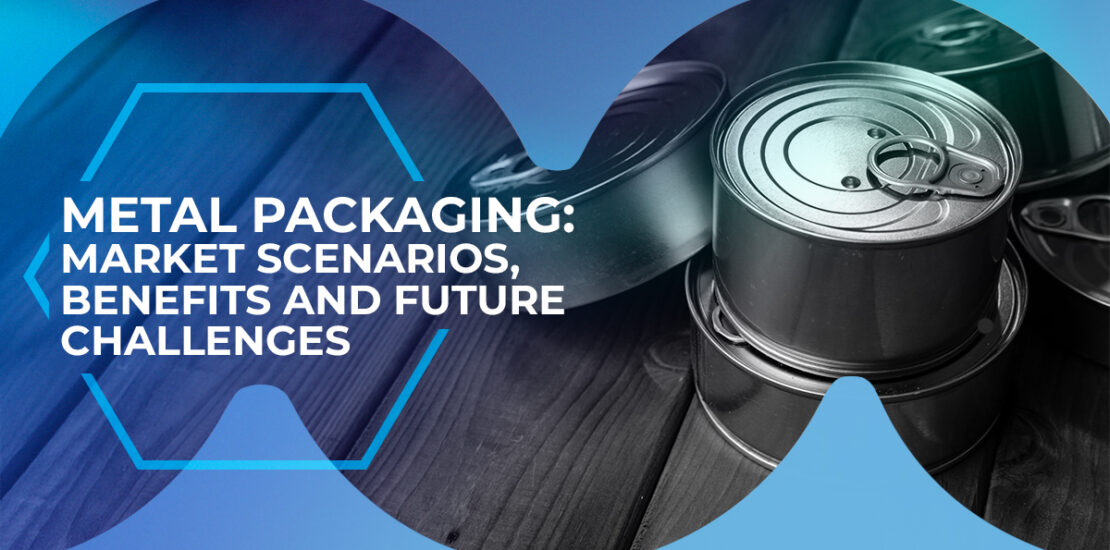Metal packaging: market scenarios, benefits and future challenges
- 29 April 2025
- Posted by: Annalisa
- Category: Uncategorized

Despite the introduction of new sustainability regulations, in recent years the metal packaging market has been growing steadily. According to data, in fact, while in 2022 the value of the entire market was $158.7 billion, by 2030 it will be $190.10 billion, thus registering a CAGR (compound annual growth rate) of around 3.54%.
But what are the advantages that make manufacturers prefer metal packaging to other types on the market? In this article, we will explore their characteristics in order to understand their strategic advantages.
The benefits of using metal packaging
As mentioned before, metal is an extremely versatile material with characteristics that make it ideal for creating packaging for a wide variety of products. It is no mystery that the food world prefers it, especially for long-life foods, over other materials. That’s because there are many benefits deriving from its usage:
- protection and preservation: metal is a very resistant material that, when sealed in the right way, provides protection from light, oxygen, moisture and external contamination, thus enabling a longer preservation of products. Furthermore, due to its high resistance to extreme temperatures, it is also ideal for frozen, heatable or sterilised products;
- functionality: since metal is a really flexible material, it can be moulded into different formats, providing a high degree of customisation and compatibility with different packaging technologies;
- lightness: metal packaging is relatively lighter than packaging made of other materials and this helps to reduce transport costs and CO₂ emissions;
- sustainability: metal is a 100% recyclable material that can be endlessly reused, thus reducing raw material waste and environmental impact;
- safety: from a consumer’s point of view, metal is also one of the safest materials as it doesn’t alter the taste or quality of products, it doesn’t release harmful substances and thanks to its hermetic closure it provides greater protection from any internal or external contamination.
These elements make it one of the best choices for packaging products in the food market and beyond. In recent years, in fact, the cosmetics sector is also implementing the use of this material for the packaging of its products.
The challenges of using metal packaging
Although the advantages are numerous, there are some elements that could pose challenges for manufacturers who choose to exploit this material:
- fluctuating raw material prices: metal is particularly subject to significant price fluctuations due to disruptions in the supply chain, political tensions or the introduction of new environmental regulations. All this leads to highly variable production costs;
- competition with other materials: despite being one of the most widely used materials and having the most features in its favour, metal contends with alternative materials such as glass or bioplastics, which are slowly gaining a foothold in the market due to their ecological properties.
These two elements, however, do not undermine a considerably growing market, which is currently worth $159.75 billion. Forecasts therefore confirm a trend whereby more and more companies are choosing metal packaging, which is generally considered to be more sustainable and better value for money.
Attention to detail and the evolution of the aluminium and steel packaging market has made Euro Tecno Tool a leader among Italian and European companies for over 30 years.
Our specialised team is able to offer innovative solutions and equipment for food, general line, packaging caps and aerosol equipment.
Contact us to discover all our services.


